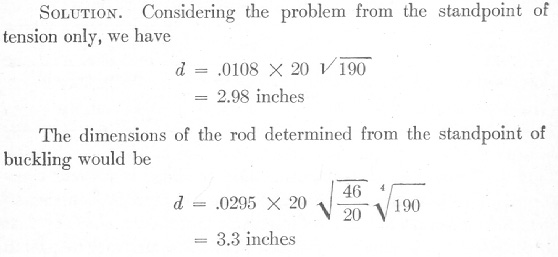
where
D = diameter of cylinder in inches
d = smallest diameter of piston rod in inches
L = length of the piston rod in inches
P = the boiler pressure in pounds per square inch
Example. Given a locomotive having cylinders 20 inches in diameter, piston rod 46 inches long, and carrying a boiler pressure of 190 pounds per square inch. Determine the diameter of the piston rod necessary.

The size which would probably be used would be, say, 3½ inches, which would allow for wear.
From the above figures, it is evident that if a piston rod is made strong enough to withstand buckling, it will be sufficiently large to resist the tensional stresses which may come upon it.
 Back to the FAQ Page
Back to the FAQ Page
